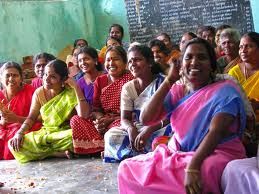Trust
Giving Credit Where Credit Is Due
Opening a window on the psychology of trust and helping.
Posted July 25, 2013
A workhorse of both social psychology and behavioral economics research that you’ve probably encountered already in the PT blogs, including this one, is the trust game. Individuals A and B are each given $10, A is invited to choose any amount ($0, $1, …, $9, $10) to send to B, the experimenter (as pre-announced to both A and B) triples anything A chooses to send (for instance, $3 sent by A becomes $9 received by B), and finally B decides whether to send anything back to A. Thanks to the experimenter’s tripling move, both A and B can make money by cooperating. But if A expects B to be selfish and keep every dollar he receives, A is better off holding onto all of her $10. So each earns $10, whereas each might have earned $20 (or $15 and $25, or $17 and $23, etc.). Lack of trust = money forfeited.
When introduced, the game was called The Investment Game because it mirrors situations in which B might have a productive investment opportunity (say, a start-up business plan) but need to borrow some capital to get it off the ground. The idea has many applications for economic and social interaction. A core insight: Societies that fail to foster norms of trustworthiness will see many potentially beneficial opportunities for mutual benefit pass them by. This is because the means through which financing can be protected by third-party enforcement mechanisms are always at least somewhat imperfect, so trust and trustworthiness are necessary lubricants of finance and of many other forms of commercial interaction.

Weakness of trust has been identified as a key factor perpetuating the cycle of poverty for the working and self-employed poor of Latin America, sub-Saharan Africa, and Asia. Millions of farmers accept low prices from middle men because they can’t afford to wait or to pay the cost of transporting their crops to market when prices are higher, given the debts they must pay back now. Millions use inferior seed or insufficient fertilizer because they can’t obtain the funds to buy these things now and repay after their harvest. Waves of copy-cat suicides by farmers unable to repay their debts to local money-lenders have made headlines in India. For each such suicide, many thousands more leave the desperation of the farm in hopes of a better life in the city, but millions of them end up working for close to nothing in “informal” jobs because they can’t afford to buy the equipment with which to be in business for themselves.
It’s been almost forty years since a young Bangladeshi economist with a Ph.D. from Vanderbilt University, Muhammad Yunus, began his experiments with loaning small amounts of money to women engaged in craft production in a village near his university town of Chittagong. This wasn’t charity, because Yunus was asking the women to pay him back with interest. The hint of kindness here was that the interest rate he specified was well below those that the women were used to paying to local money-lenders. Yunus was gambling some of his own pay to test the theory that, despite lack of collateral and bank accounts, the women would be a good credit risk. The rest is history Bangladesh’s Grameen Bank, which Yunus founded, has loaned some $11.35 billion, recorded a 97 percent repayment rate on loans, and become the inspiration for a global microfinance movement that includes microfinance institutions in more than 60 countries giving loans to some 130 million people, according to the World Bank Group. In 2006, Yunus and the Grameen Bank were awarded the Nobel Peace Prize for showing that “even the poorest of the poor can work to bring about their own development.”
So what’s next for microfinance? eBay founder Pierre Omidyar gave the movement a small shot in the arm in 2005 when he donated $100 million to his alma mater, Tufts University, with the condition that the funds be invested in microfinance projects. In the same year, two Americans inspired by a lecture Yunus had given at Stanford Business School launched Kiva, a non-profit organization that allows people to lend money to micro-entrepreneurs in a large number of less developed countries through dozens of partner organizations including locally based micro-finance institutions and social businesses. At kiva.org, residents of affluent countries like the United States can make their spare cash available to struggling micro-business operators in countries like Bolivia, Kenya, India, and Cambodia, with a few proverbial clicks of the mouse or taps on their smartphone screens. So far, more than $400 million in loans have been made through the site by almost a million lenders to a similar number of recipients.
But $400 million in seven or eight years isn’t that much money considering that ordinary Americans keep hundreds of billions in low-interest checking and savings accounts, and that at least a few tens of billions of those dollars probably belong to better-off individuals who could afford to take small risks. If the opportunity to put their money at the disposal of individuals working to help themselves through operating small sewing, craft, retail, animal husbandry, and other businesses in poor countries, were placed conveniently enough before them, might not a few billion dollars more flow to microfinance?

That’s the premise of an experiment that one of the students in my department’s Ph.D. program is now commencing. Josie, from Taiwan, will offer experiment participants the opportunity to lend money to the kinds of micro-entrepreneurs who borrow from Kiva’s partner organizations. Those who get funded are expected to repay the lending organizations both the principal and the (below money-lender) microfinance interest rates in eighteen months or less. The interest will be kept by the organizations to cover their operating expenses, and the principal will either come back to be re-loaned or cover expenses of Josie’s research project, or in some conditions be paid back to the participants in the experiment.
Because the experiment multiplies the money participants choose to lend (as in the trust game) and because the experiment varies whether repaid funds are returned to them, Josie will be able to study how the prospect of a financial return affects decisions on whether to support borrowers. This way, she can begin to get a handle on whether online microfinance lending could bring in more money by sharing interest with the lenders, or whether doing so would on the contrary reduce lending by repelling lenders motivated by philanthropic impulses. She’ll also be studying the impacts of ethnicity, gender, and other factors, by varying the gender and ethnic/racial identities of the potential borrowers (who will be from Latin America, sub-Saharan Africa, or East and Southeast Asia), by inducing participant decisions through which to gauge their degree of risk aversion and preference for immediate over later rewards, and by collecting information on the participants’ personal characteristics (family background, ethnicity, religion and religiosity, exposure to poverty) in post-decision questionnaires.
One hurdle Josie faces, much like the micro-entrepreneurs she hopes to aid, is the lack of funding for undertaking her research on a sufficient scale. Applications for funding submitted to two promising sources were turned down. She has seed money from an international studies center, but needs several thousand dollars to conduct the experiment on an adequate scale.
If you have funds you’d like to lend to a micro-business operator in the developing world, you can open your own account at kiva.org. If you don’t need your money back and you want to help Josie to complete her study, you can follow the steps below and purchase one or more $25 gift cards that you can place in Josie’s Kiva account. You’ll be simultaneously helping the micro-entrepreneurs funded by Kiva’s partners, since every dollar put in her account will be lent to a small entrepreneur in one of the regions mentioned, and up to half of it will be lent multiple times. You’ll also be helping social scientists to understand the potential to scale up one-to-one lending to capital-constrained individuals in the developing world. If enough funding is obtained, the experiment may be expanded in scale and carried forward by other researchers.
Here’s how to help:
Step 1.
Go to http://www.kiva.org/lender/josie2004
Step 2.
Choose "send a kiva card". You’ll be directed to a web page where you can fill in the amount you would like to give Josie.
Step 3.
Fill in the optional personal message, choose the card value, then click "add to basket and check out". Note that the amount you give must be a multiple of $25. If you’d like to receive information about how to follow the experiment’s progress, participate in a survey, or even possibly take part in the experiment, leave your email address in the optional message area. If you’d like to receive a scenic Taiwan postcard with personalized bilingual message as a small ‘thank you’ from Josie, leave your mailing address.
Step 4.
Fill in the payment information.
For further information on how you can support Josie’s project, contact: josiechen12@gmail.com.




